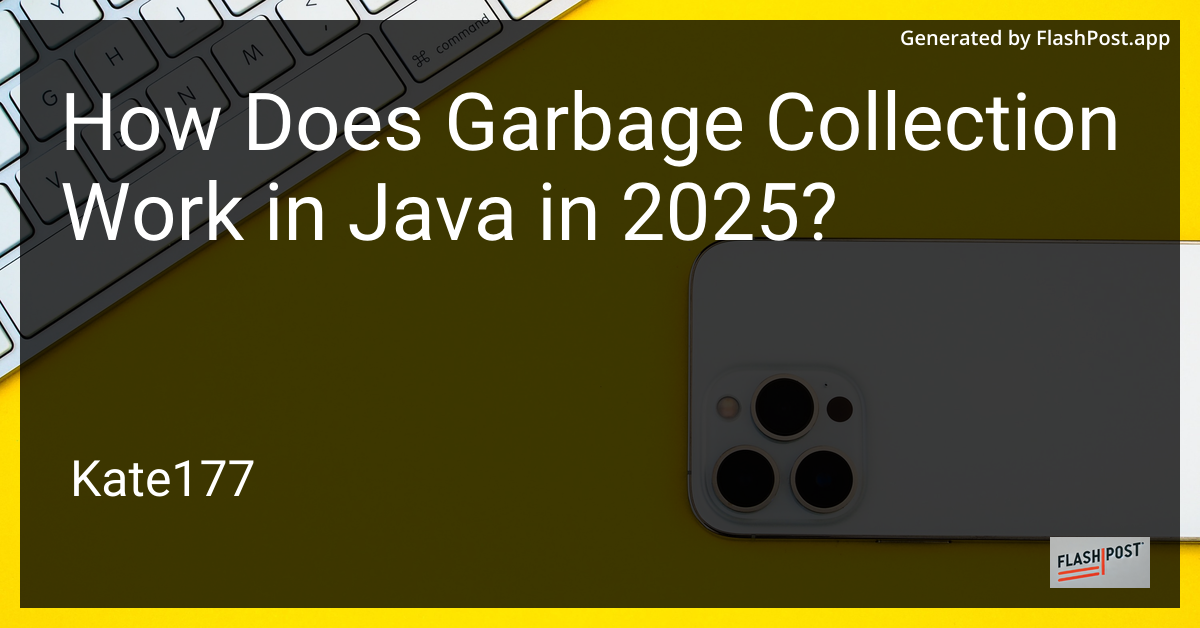
In the ever-evolving landscape of programming, understanding how garbage collection operates in languages like Java remains crucial. By 2025, Java's garbage collection mechanism continues to play a pivotal role in managing memory, ensuring efficient performance in a wide array of applications. This article delves into the nuances of garbage collection in Java as it stands today, providing a thorough overview for developers.
The Evolution of Garbage Collection
Java's automatic garbage collection (GC) approach significantly eases the burden on developers by managing memory allocation and deallocation. This mechanism helps prevent memory leaks and optimizes resource utilization. As technology advances, the sophistication of garbage collection techniques has grown:
-
Generational Garbage Collection: Java categorizes objects based on their lifespan. Short-lived objects are grouped as young generation, while longer-living objects dwell in the old generation. This generational division allows for quicker and more efficient memory cleaning.
-
Concurrent Mark-Sweep (CMS) and G1: The CMS collector was one of the early solutions designed to minimize GC pause times. However, in recent years, the G1 (Garbage-First) collector became prominent due to its enhanced effectiveness in balancing pause times and throughput.
-
ZGC and Shenandoah: These collectors have gained traction in handling sizeable heap allocations with minimal latency. They are designed for ultra-low pause times, making them perfect for applications demanding high responsiveness.
How Garbage Collection Works in 2025
As of 2025, Java's garbage collection has further refined itself, focusing greatly on concurrent processing and adaptability:
-
Adaptive Optimization: Garbage collectors now harness machine learning algorithms to predict object life cycles and optimize their cleaning patterns. This proactivity not only mitigates pauses but also enhances overall application performance.
-
Hybrid Collection Strategies: Java's contemporary GC technology utilizes hybrid approaches combining the best features of traditional and modern techniques for all-around efficiency.
-
Dynamic Thresholds: The latest collectors determine thresholds dynamically to adapt to an application's needs, fine-tuning memory management based on real-time data insights.
Implementing Efficient Garbage Collection
While Java manages memory automatically, developers can still optimize GC effectiveness:
-
Profiling and Monitoring: Regularly profiling your application to understand object allocation patterns can help in tuning the garbage collection for optimal performance.
-
Memory Management Best Practices: Efficient use of data structures, careful handling of references, and avoidance of memory leaks contribute significantly to effective garbage collection.
-
Parallel Processing: Leveraging Java's loops and concurrent processing capabilities can enhance performance during GC cycles.
Additional Resources
For developers interested in widening their programming skills and knowledge, consider exploring these topics:
- Learn how to call a JavaScript function.
- Master techniques for sorting arrays in JavaScript.
- Dive into resizing frames with Java by reading about resizing a JFrame in Java.
By staying abreast of the latest advancements and supplementing your knowledge with practical skills from varied programming environments, you can ensure robust and high-performance applications. As we approach 2025, the landscape of garbage collection in Java is both challenging and rich with opportunities.